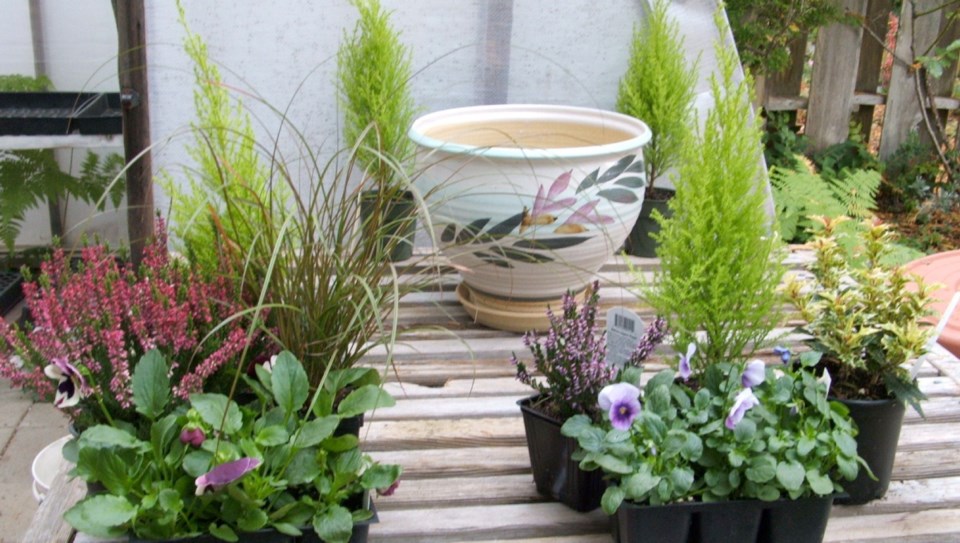Dear Helen: As a new arrival to the Island from the prairies, I’m keen to try a few containers planted with flowers and other ornamentals that will stay looking good over the winter. What plants would you suggest?
W.P.
It’s common to have glass doors from a well-used room leading onto a deck, balcony or patio.
A setup like this gives the opportunity to have a vista of closeup colour and interest through the fall and winter, and well into spring.
If you have plant stands or some sort of mobile shelving, you can create tiers of plants beside the glass rather than just one level.
For bright, cheery colour in autumn, during mild winter weather and through most of the spring, pansies and violas are supreme.
Inserting a few small spring flower bulbs into the soil between pansy and viola plants will add extra late-winter and early-spring colour to the planters. Crocuses, miniature irises and dwarf daffodils are good choices for this.
Further choices for mixed planters using dwarf conifers and broad-leaved shrubs, ferns, ornamental grasses, evergreen perennials, small heathers and trailing ivies will depend largely upon what plants you can find at garden centres in your area.
Early in the month, for example, I went to a nearby nursery with a friend to help her choose winter vegetable transplants for containers on her deck.
I was surprised to find an entire table of small heucheras (coral bells) with leaves in lime green, deep burgundy, creamy apricot and other lovely colours. These evergreen perennials are very showy in containers and fine for winter display.
Dear Helen: Some time in the spring, you answered a question about green worms in trees.
I forget the details of the controls you suggested, but they were to be done in the fall. Please refresh my memory.
R.S.
There was a question in a mid-June column about green worms hanging from the trees in a reader’s Garry oak meadow.
The issue was winter moth, whose larvae (the worms) often infest Garry oaks on southern Vancouver Island. Other common targets are fruit and other broadleaf trees. Bruce spanworm is a similar pest.
The larvae feed on flowers, leaves and buds from early April to late May or mid-June. They pupate in leaf litter beneath the trees, and emerge in the fall as adult moths to mate and lay eggs in the trees. That is the time to initiate control measures.
Because the female moths are flightless and must climb up the tree trunks to lay eggs, they can be trapped by wrapping the trunk with a 25-centimetre-wide band of plastic wrap or parcel tape and applying an insect glue such as Tanglefoot.
Do this in mid-October, and remove the band in February.
Place the bands high enough on trunks to ensure they won’t be disturbed by pets or children.
If a trunk is deeply creviced, wrap it with cotton batting before applying the outer wrap. This will keep the female moths from crawling under the sticky band. Check the bands regularly and replace them if they become covered in debris or trapped moths.



